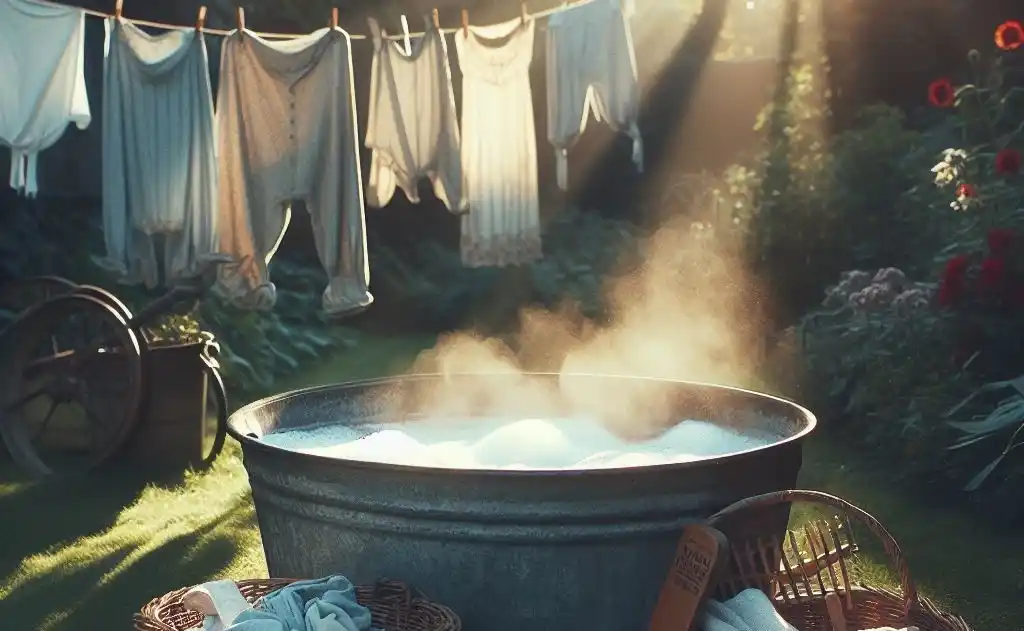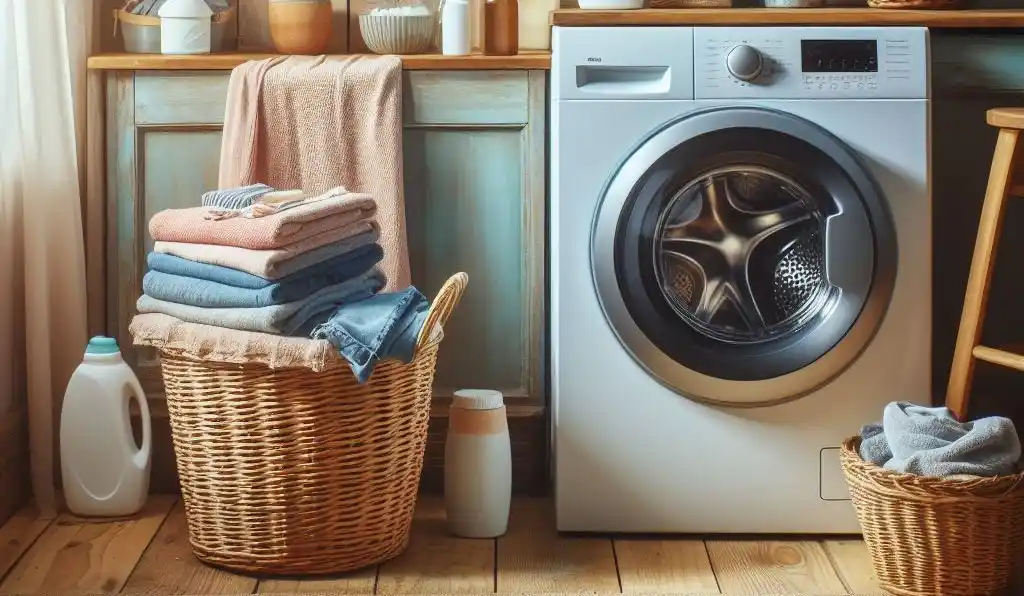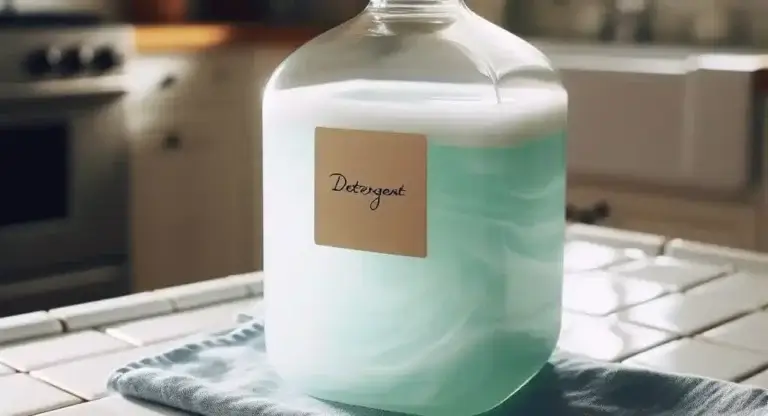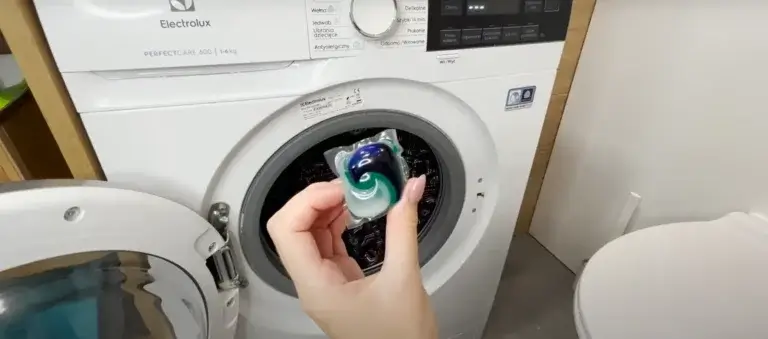Can I Wash Towels With Clothes? The Complete Guide
Are you standing in your laundry room wondering if you can just throw the towels in with the rest of the dirty clothes to save time and make laundry simpler? Or are you worried that can i wash towels with clothes?
This is a common question many have when it comes to doing laundry. Towels can seem like they should be washed separately since they are often used for drying our clean bodies after bathing or showering. But does washing them with clothes really cause problems?
In this complete guide, we will cover whether or not you can wash towels with clothes, look at the pros and cons, and provide tips for getting the best results when washing towels. Let’s dive in!
Table of Contents
Should You Wash Towels and Clothes Together?
The short answer is yes, you can wash towels with clothes without major issues. However, there are a few things to consider first before tossing them in together.
Towels are very linty and can produce a lot of lint in the wash. This clingy lint can then get stuck to clothes, especially things like yoga pants, leggings, dark colors and delicates.
So while it’s not necessarily “dangerous” or damaging to wash them together, you may end up with lint covered clothes which require rewashing if towels weren’t filtered out first in the lint catcher.
Here are the main pros and cons of washing towels with clothes:
Pros of Washing Towels and Clothes Together
- It saves time by only having to do one load of laundry instead of separating towels and clothes into different loads
- Washing towels with clothes can help bulk up smaller loads so you fully utilize the capacity of your washing machine
- It conserves water by only doing one larger wash load instead of multiple smaller loads
Cons of Washing Towels and Clothes Together
- Towels produce a lot of lint in the wash which can cling to clothing items
- The long, hot wash cycle needed to properly clean towels can damage delicate clothing items washed with them
- Towels often need to be washed in very hot water, while many clothes are better washed in cold water
- Towels take a very long time to fully dry which can delay drying clothes washed with them
Now that you know the main pros and cons, let’s look deeper at tips for washing towels and clothes together successfully.
Can I Wash Towels With Clothes? The Ultimate Solution

Washing clothes might seem simple, but when towels enter the equation, things can get fuzzy (literally!). Should you toss your fluffy bath towels in with your everyday garments? The answer, like most things in laundry, isn’t black and white (unless you’re washing those, of course!).
Why the Towel Washing Debate?
Towels and clothes differ in several key ways that impact their washing needs:
- Fabric: Towels are typically thicker and loopier, designed for maximum absorbency. Clothes, on the other hand, come in a wider variety of fabrics with different care requirements.
- Cleaning Power: Towels harbor more dead skin, bacteria, and sweat, necessitating hotter washes and stronger detergents. Clothes may not need such intense cleaning.
- Lint: Towels shed fibers like nobody’s business. This lint can cling to clothes, especially delicate fabrics, affecting their texture and performance.
- Color Transfer: Darker towels can bleed color onto lighter clothes, leading to laundry disasters.
So, Can You Wash Towels with Clothes?
Technically, yes, you can. But before you toss everything in the same basket, consider these factors:
Green Light:
- Similar Colors: Wash light-colored towels with light clothes and dark towels with darks.
- Light Clothes: Towels with minimal lint, like tea towels or hand towels, can coexist with clothes on cooler wash cycles.
- Low-Lint Clothes: Cotton t-shirts, jeans, and other lint-resistant fabrics can tolerate towel company.
Yellow Light:
- Hot Washes: If clothes require a hot wash, separate them from towels, which often benefit from higher temperatures.
- Delicate Fabrics: Lingerie, silk, and wool require special care and shouldn’t be mixed with towels’ rough textures.
- Heavy Loads: Don’t overload your washer with both towels and clothes. This reduces cleaning effectiveness and can damage delicate fabrics.
Red Light:
- New Towels: Wash new towels separately to avoid lint transfer onto other clothes.
- Bedding and Sheets: These harbor similar dirt and bacteria as towels and should be washed together or separately from clothes.
- Highly Soiled Clothes: Clothes covered in mud, grease, or other heavy stains shouldn’t be mixed with towels, as the stains could transfer.
Ultimately, the best practice is to separate towels from clothes whenever possible. This ensures optimal cleaning for both, minimizes lint transfer, and protects your delicate garments. However, if time or laundry loads are tight, follow the guidelines above for safe and effective mixed washes.
Bonus Laundry Tips:
- Shake out towels before washing: This removes loose lint and dirt.
- Use the right detergent: A heavy-duty detergent for towels and a gentler one for clothes will keep everyone happy.
- Avoid fabric softener: It can reduce towel absorbency.
- Air-dry towels whenever possible: This helps them maintain their fluffiness and prevents shrinkage.
By following these tips, you can achieve laundry harmony and ensure both your towels and clothes emerge clean, fresh, and ready for their next adventure.
7 Tips for Washing Towels and Clothes Together
Follow these tips if you plan to wash your towels and clothes in the same loads:
1. Wash Towels Separately if Extremely Soiled
Brand new towels or extremely soiled, stained towels should be washed separately from clothes on a hot wash cycle. The harsh detergents and extremely hot water needed to fully clean filthy towels can damage clothing fabrics.
2. Use a Lint Catcher
Be sure to always use the lint catcher in your washing machine when washing towels with clothes. This will filter out much of the lint during the cycle.
You can then quickly wipe lint off clothing items as you transfer them from the washer to the dryer if some remains.
3. Wash Towels and Clothes on Cold
Wash your towels and clothes together using cold water settings. This prevents damage to fabrics that hot water can cause. It also saves energy.
4. Use Gentle Detergent
When washing towels with delicate clothing items, use a gentle, fragrance-free detergent instead of regular detergent to prevent irritation or damage.
5. Shake Out Towels First
Before tossing extremely linty towels in with clothes, give them a quick shake outside first to loosen and remove excess lint.
6. Dry Towels Separately
While you can wash towels and clothes together, it’s best to dry them separately. Towels take much longer to fully dry than most clothing items. This can delay drying times and increase energy usage.
7. Clean the Lint Trap
Be sure to remove lint from the lint trap in your dryer between each cycle. Towels produce lots of lint when dried which can cling onto clothing items put in the dryer later. Removing lint between cycles prevents lint transfer.
Types of Items Not to Wash With Towels
While following the tips above allows you to successfully wash most clothing with towels, there are certain fabrics and garments that should always be washed separately:
- Delicates: Bras, lace garments, silks and other delicates should be washed separately from towels to prevent snags, tears or damage from the harsh lint, detergent and agitation in a towel load.
- Spandex & Lycra: Towels can grab onto and pull spandex threads in items like swimwear, causing permanent damage. Wash separately.
- Fuzzy Fabrics: Fleece jackets, vests, blankets and any fuzzy fabric will act like a lint magnet if washed with towels. Wash separately to prevent extreme lint buildup.
- Dark Colors: Dark colored clothing should be washed separately from white or light colored towels which can transfer dye during washing cycles.
- Business Attire: Anything specially dry cleaned only including suit jackets, ties, dress pants, and blouses should never be washed with towels.
Be sure to always read clothing labels before washing to identify delicates, dry clean-only items and specialty fabrics that require separate, gentle washing.
Now let’s look at how to wash towels the right way for optimal cleaning.
How to Properly Wash Towels

Follow these steps to keep your towels fresh, clean, and lint-free:
1. Shake Out Towels
Before placing towels in the wash, give them a quick shake outdoors to loosen and release excess lint and hair. This prevents it from getting on clothing items.
2. Use Hot Water
Wash towels using the hottest water setting safe for the fabric. Most cotton towels can be washed with extremely hot water, above 120°F if possible. Hot water sanitizes and removes body oil and bacteria buildup.
3. Wash Towels Separately When Very Soiled
Brand new towels or towels that are heavily soiled with makeup, dirt or stains should be washed separately from clothing on the hottest cycle possible.
4. Use The Right Detergent
For regular towel washings, use a fragrance-free sensitive skin detergent. For periodic deep cleaning and brightening, use detergent with oxyclean or bleach alternative added.
5. Load Properly
Make sure your machine has adequate space to allow towels to move and scrub against each other to remove dirt. Overloading can lead to musty smells.
6. Use Fabric Softener
To reduce lint production in towels, use a liquid fabric softener or dryer sheets when drying them. This helps reduce static cling that causes lint to stick to fabrics.
Be sure to follow any special washing instructions on towel tags including water temperature, tumble dry low or machine wash delicate to prevent damage.
Can You Wash Towels With Sheets?
What about washing towels with sheets and other linens like tablecloths and pillowcases? The same lint and drying time issues occur when mixing towels and sheets together.
However, lint transfer is less of a concern with most sheets since they go directly back on beds and don’t touch bare skin. Items like table linens and cloth napkins also generally won’t directly touch skin if lint remains after washing with towels.
Here are some quick tips for washing towels with sheets and other linens:
- Wipe Down Lint – Wipe residual lint off sheets and linens before drying if washing with lint-producing towels.
- Wash and Dry Separately – Whenever possible, wash towels separately from sheets and line dry each item type separately for the fastest drying.
- Use Fabric Softener – Help reduce lint production by using liquid fabric softener when washing and drying towels with sheets.
While washing towels and sheets together won’t necessarily damage them, separately washing and drying these lint-producing towels from bedding can save time and prevent lint accumulation.
Now let’s look at whether or not you can wash towels at a laundromat along with regular clothes.
Can You Wash Towels at a Laundromat With Clothes?
If you don’t have a washing machine at home, you’ll need to head to a laundromat to wash personal items like towels and clothing. But should you toss everything into machines together or wash towels separately?
The same general guidance applies when washing at a laundromat. Be mindful of lint transfer and fabric damage to clothing when mixing towels with regular laundry.
Here are some laundromat washing tips:
- Do Smaller Loads – To save money and time, split towel loads away from mixed clothing loads instead of stuffing one huge load into a machine.
- Lint Roll Clothes – Bring a lint roller to quickly remove lint off dried clothing items after drying if towels are dried together.
- Line Dry Towels – Hang heavy towels separate from clothing to allow them to fully line dry faster.
While washing towels with clothes at a laundromat won’t ruin anything, taking some extra steps to reduce lint transfer and speed up drying times makes the process much smoother.
The next important question is…once towels are clean, how should you store them to keep them fresh?
Storing Towels the Right Way
To ensure towels stay soft, absorbent and lint-free in between washing, be sure to store them properly. Here’s how:
- Fully Dry Towels – Before putting towels away, machine dry them completely or hang them outside to fully line dry. Storing damp towels allows mold and mildew growth.
- Fold Properly – Always take the time to properly fold towels using smooth creases before storage to prevent wrinkling. Don’t just bunch them up.
- Use Bins or Shelves – Store folded towels in breathable canvas bins or on open shelves. Avoid sealing them in airtight plastic tubs or containers.
- Hang Bar Towels – Kitchen towels and hand towels can be nicely stored hanging from bars or hooks for convenience.
- Check for Mold – Check towels periodically for any dark staining or foul odors that indicate mold or mildew. Discard towels with mold growth.
- Wash Often – Wash towels every 3-5 uses on hot cycles to kill bacteria and fully remove body oils and dead skin cells that attract dirt over time.
Properly storing clean towels keeps them ready for their next use while helping them last for many years.
Now that you know how to wash and store towels, let’s look at how frequently towels should be replaced.
When Should You Replace Old Towels?
With proper care, most high-quality cotton bath towels can easily last 5-10 years. But there are a few signs that indicate your old towels need to be swapped for new ones:
- Thin & Worn – Towel fibers naturally break down over time with regular use and washing. Once towels become thin, frayed or full of small holes, it’s time to replace them.
- Hard & Rough – Age, drying methods and detergents can cause cotton towels to become rough and scratchy feeling rather than soft and plush. Toss when they start to feel stiff and harsh against skin.
- Poor Absorbency – The older towels get, the less effectively they soak up water. Replace when dampness remains on your skin after patting dry with a towel.
- Visible Stains – Heavily stained towels may still get your skin dry, but noticeable stains including bleach discoloration, yellowing or mildew signal it’s time for a replacement.
- Foul Odors – Towels that retain foul odors even after washing should be discarded, especially if signs of mildew or mold growth exist. Musty towels can’t be salvaged.
With proper storage and frequent hot water washing, good towels can last quite a while. But once their performance, comfort, and appearance decline, it’s best to replace old towels with new ones.
FAQs About Washing Towels and Clothes Together
For additional questions about washing towels with clothes, see these common questions and answers:
Can you ruin clothes by washing towels with them?
Washing clothes with towels generally won’t ruin clothing if proper precautions are taken including using a lint trap, lint rolling after drying and avoiding delicates. However, towel lint can be impossible to fully remove from fuzzy fabrics like fleece coats which may require rewashing separately.
Is it OK to wash and dry towels with baby clothes?
It’s best to keep towels completely separate from baby items like onesies that will touch delicate skin. Even with lint traps, towel lint residue can remain on fabrics and irritate sensitive baby skin.
Why do my clothes have a mildew smell after washing with towels?
If not fully dried before storage between washes, damp towels can develop mildew and mold growth which then transfers stinky odors to clothing items washed together later on. Always fully dry towels between washes.
Should white towels be washed separately from darks?
It’s best to wash white towels separately from dark-colored towels or clothing on hot cycles. The extreme heat and agitation required to get towels fully clean may cause dye in darker fabrics to run and discolor the white towels if washed together.
Can you wash gym clothes with bath towels?
Due to the potential for bacteria transfer between dirty gym clothing and towels used to dry your clean body, it’s best to always wash fitness apparel separately from bath towels even if using hot water and bleach.
Conclusion
While towels and clothes can generally be washed together with some lint precautions taken, best practice is to always wash delicate, spandex items, uber fuzzy fabrics, and anything dry clean only separately from thick, lint-creating towels.
Be sure to use your washing machine’s lint catcher, lint roll clothing after drying and shake out towels first before washing for the smoothest results. Avoid overstuffing loads with dense towels that prevent adequate cleaning and agitation motion.
With proper detergent, very hot water, lint removal and separate drying, mixing most towels and clothes in washing machines works out just fine. But taking those extra steps keeps both towels and apparel like new for longer!
Now that you know all the ins and outs of washing towels and clothing, here’s wishing you a happy washing ahead!








